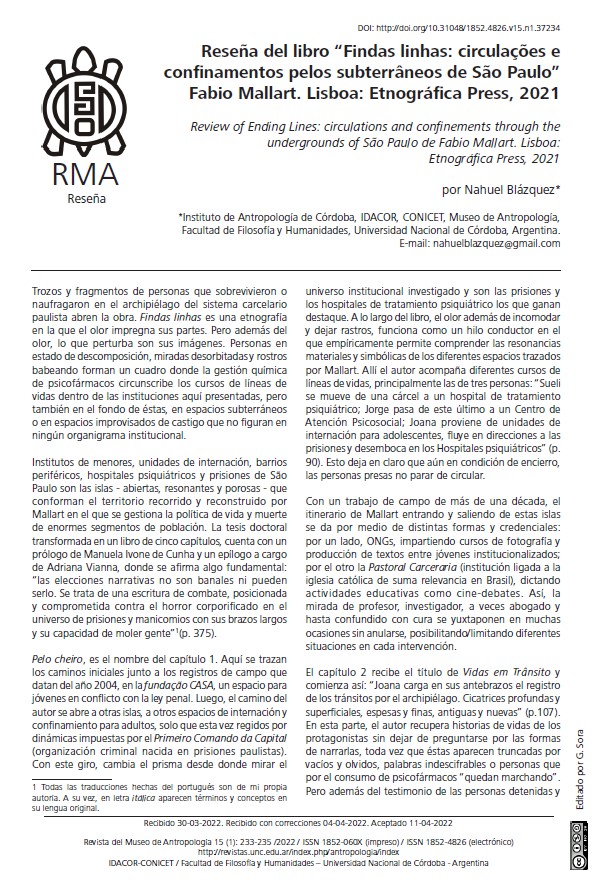Book review: “Findas linhas: circulações e confinamentos pelos subterrâneos de São Paulo” the Fabio Mallart
DOI:
https://doi.org/10.31048/1852.4826.v15.n1.37234Keywords:
Prison, Asylums, Psychotropic drugs, ArchipelagoAbstract
Trozos y fragmentos de personas que sobrevivieron o naufragaron en el archipiélago del sistema carcelario paulista abren la obra de Fabio Mallart. Findas linhas es una etnografía en la que el olor impregna sus partes. Pero además del olor, lo que perturba son sus imágenes. Personas en estado de descomposición, miradas desorbitadas y rostros babeando forman un cuadro donde la gestión química de psicofármacos circunscribe los cursos de líneas de vidas dentro de las instituciones aquí presentadas, pero también en el fondo de éstas, en espacios subterráneos o en espacios improvisados de castigo que no figuran en ningún organigrama institucional. Los institutos de menores, unidades de internación, barrios periféricos, hospitales psiquiátricos y prisiones de São Paulo son las islas - abiertas, resonantes y porosas - que conforman el territorio recorrido y reconstruido por Mallart en el que se gestiona la política de vida y muerte de enormes segmentos de población brasilera.
Downloads
References
Mallart. F (2021). Findas linhas: circulações e confinamentos pelos subterrâneos de São Paulo. Lisboa: Etnográfica Press. Disponible en Internet: <http://books.openedition.org/etnograficapress/7497>. ISBN: 9791036589966. DOI: https://doi.org/10.4000/books.etnograficapress.7497.

Downloads
Published
Issue
Section
License
Copyright (c) 2022 Nahuel Blázquez

This work is licensed under a Creative Commons Attribution-NonCommercial-ShareAlike 4.0 International License.
Those authors who have publications with this Journalaccept the following terms:
a. Authors will retain their copyrights and guarantee the journal the right of first publication of their work, which will be simultaneously subject to the Creative Commons Attribution License (Licencia de reconocimiento de Creative Commons) that allows third parties to share the work as long as its author and his first publication in this journal.
b. Authors may adopt other non-exclusive licensing agreements for the distribution of the version of the published work (eg, deposit it in an institutional electronic file or publish it in a monographic volume) provided that the initial publication in this journal is indicated.
c. Authors are allowed and recommended to disseminate their work on the Internet (eg in institutional telematic archives or on their website) before and during the submission process, which can lead to interesting exchanges and increase citations of the published work. (See The Effect of Open Access - El efecto del acceso abierto)











